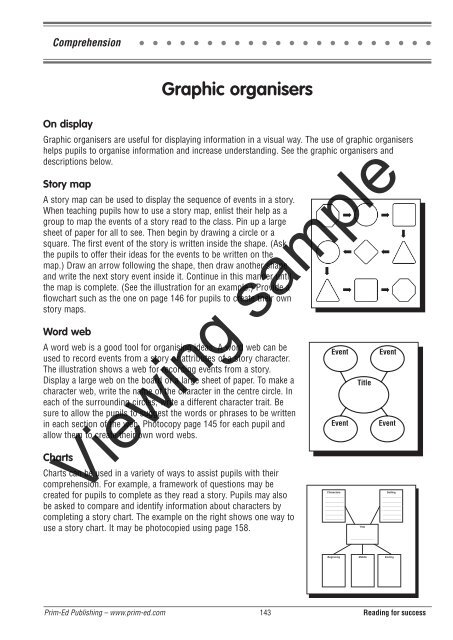PR-6218IRE Reading for Success - Book 3
Create successful ePaper yourself
Turn your PDF publications into a flip-book with our unique Google optimized e-Paper software.
Comprehension<br />
Graphic organisers<br />
On display<br />
Graphic organisers are useful <strong>for</strong> displaying in<strong>for</strong>mation in a visual way. The use of graphic organisers<br />
helps pupils to organise in<strong>for</strong>mation and increase understanding. See the graphic organisers and<br />
descriptions below.<br />
Story map<br />
A story map can be used to display the sequence of events in a story.<br />
When teaching pupils how to use a story map, enlist their help as a<br />
group to map the events of a story read to the class. Pin up a large<br />
sheet of paper <strong>for</strong> all to see. Then begin by drawing a circle or a<br />
square. The first event of the story is written inside the shape. (Ask<br />
the pupils to offer their ideas <strong>for</strong> the events to be written on the<br />
map.) Draw an arrow following the shape, then draw another shape<br />
and write the next story event inside it. Continue in this manner until<br />
the map is complete. (See the illustration <strong>for</strong> an example.) Provide a<br />
flowchart such as the one on page 146 <strong>for</strong> pupils to create their own<br />
story maps.<br />
Word web<br />
A word web is a good tool <strong>for</strong> organising ideas. A word web can be<br />
used to record events from a story or attributes of a story character.<br />
The illustration shows a web <strong>for</strong> recording events from a story.<br />
Display a large web on the board or a large sheet of paper. To make a<br />
character web, write the name of the character in the centre circle. In<br />
each of the surrounding circles, write a different character trait. Be<br />
sure to allow the pupils to suggest the words or phrases to be written<br />
in each section of the web. Photocopy page 145 <strong>for</strong> each pupil and<br />
allow them to create their own word webs.<br />
Charts<br />
Charts can be used in a variety of ways to assist pupils with their<br />
comprehension. For example, a framework of questions may be<br />
created <strong>for</strong> pupils to complete as they read a story. Pupils may also<br />
be asked to compare and identify in<strong>for</strong>mation about characters by<br />
completing a story chart. The example on the right shows one way to<br />
use a story chart. It may be photocopied using page 158.<br />
Event<br />
Event<br />
Characters<br />
_____________<br />
_____________<br />
_____________<br />
_____________<br />
_____________<br />
_____________<br />
Title<br />
Title<br />
________________<br />
Event<br />
Event<br />
Viewing sample<br />
Setting<br />
_____________<br />
_____________<br />
_____________<br />
_____________<br />
_____________<br />
_____________<br />
Beginning Middle Ending<br />
Prim-Ed Publishing – www.prim-ed.com 143 <strong>Reading</strong> <strong>for</strong> success


















